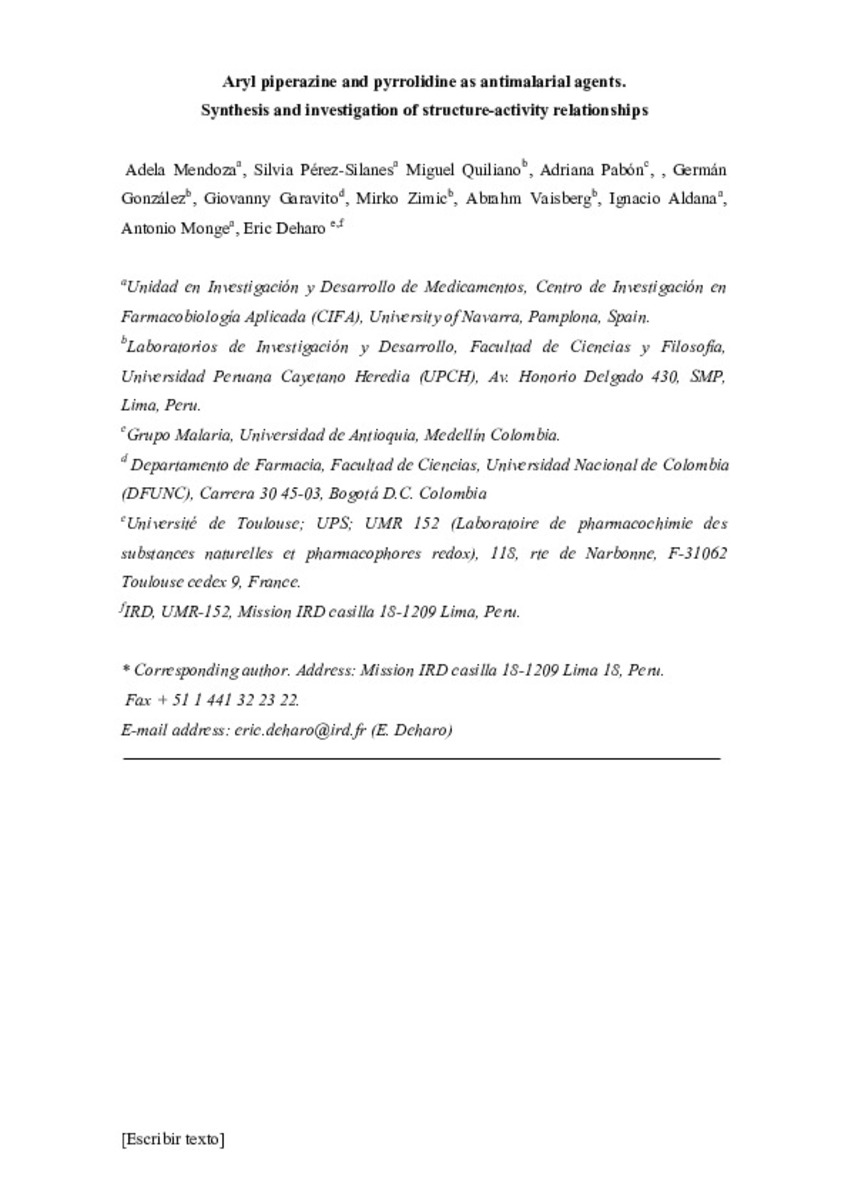Aryl piperazine and pyrrolidine as antimalarial agents. Synthesis and investigation of structure-activity relationships
Keywords:
Piperazine
Pyrrolidine
Antiplasmodial
Plasmodium
Antimalarial agents
Docking studies
Citation:
Mendoza A, Perez-Silanes S, Quiliano M, Pabon A, Galiano S, Gonzalez G, et al. Aryl piperazine and pyrrolidine as antimalarial agents. Synthesis and investigation of structure-activity relationships. Exp Parasitol 2011 Jun;128(2):97-103.
Statistics and impact
0 citas en

Items in Dadun are protected by copyright, with all rights reserved, unless otherwise indicated.









